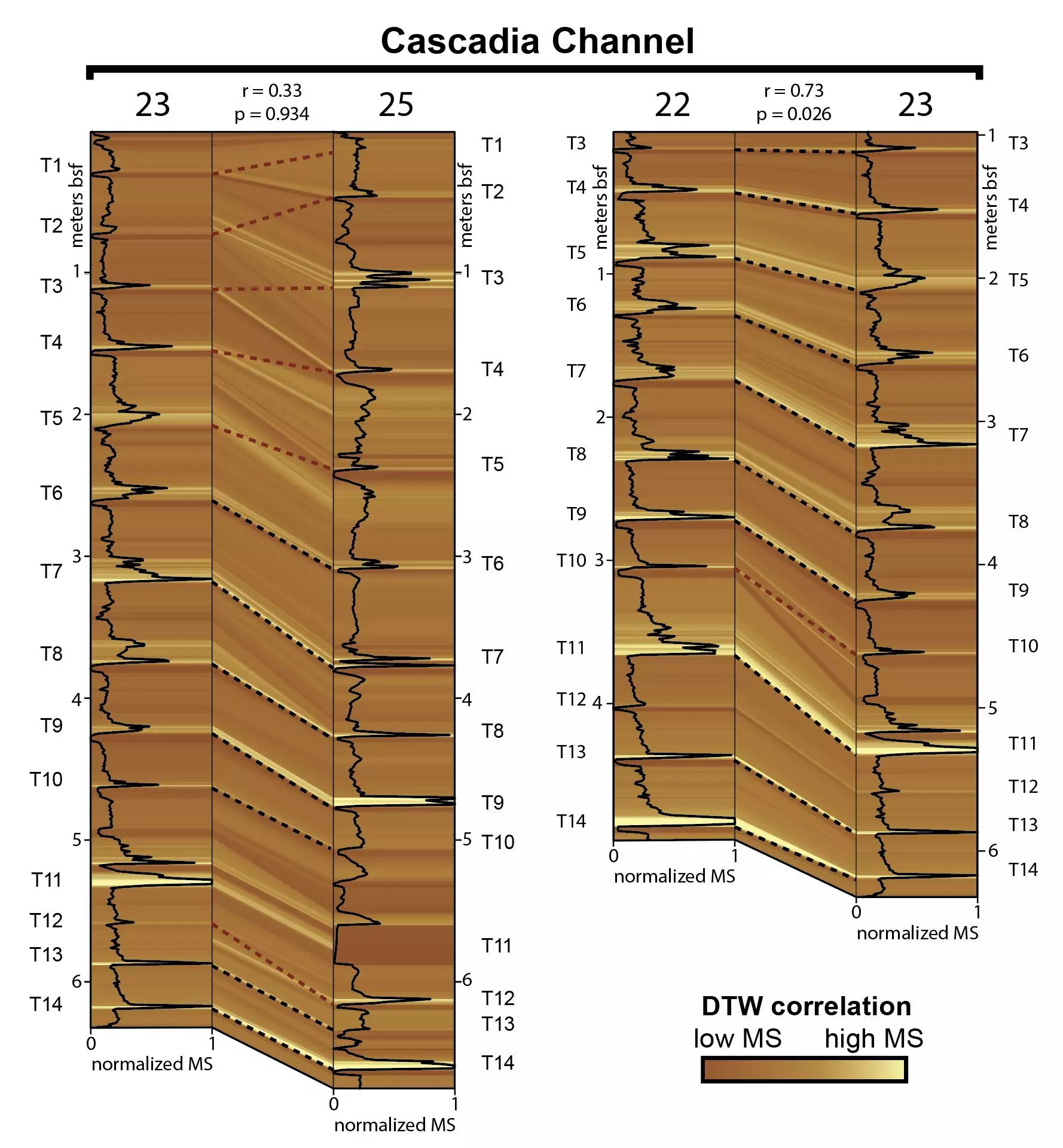The Cascadia subduction zone, a critical tectonic feature along the Pacific Northwest, is notorious for its historical capacity to generate powerful earthquakes and associated tsunamis, the impacts of which can stretch across the globe. Often referred to as the “big one,” the most recent significant quake occurred in 1700, but scientists emphasize that this seismic threat is far from a relic of the past. With urban centers flourishing in proximity to this geological hazard, understanding the likelihood and timing of future seismic events is indispensable for disaster preparedness. This urgency is underscored by a recent study from The University of Texas at Austin, which casts doubt on long-held assumptions regarding the geological record used to predict future earthquakes.
Central to the study’s findings is the analysis of turbidites—sedimentary deposits formed by underwater landslides. In adjacent geological layers of the seafloor, these deposits are often employed as historical markers of seismic activity. Traditionally, researchers have correlated turbidite layers with earthquake occurrence, but the recent analysis reveals potential flaws in this methodology. Researchers utilized an advanced algorithm to evaluate the relationships between turbidite layers from the past 12,000 years, discovering that their correlations were no better than random chance in most cases. This raises crucial questions about the reliability of using turbidites to establish a timeline for past quakes.
The implications of these findings are significant. The existing framework, which has classified and estimated seismic intervals primarily based on turbidite analysis, is fundamentally questioned. Joan Gomberg, a geophysicist at the U.S. Geological Survey and co-author of the study, stresses the need for caution when interpreting these geological records. The ongoing vulnerability of the Cascadia region underscores the necessity for continuous research to refine seismic timelines, irrespective of previous interpretations supported by turbidite analysis.
Turbidites are formed through a variety of mechanisms, some of which are not directly related to earthquakes. Natural phenomena such as storms and floods can also generate similar sedimentary layers, leading to complexities in deciphering which turbidites are genuinely indicative of seismic events and which are the byproduct of other geological processes. The traditional reliance on finding these layers in geologic cores to draw connections between sequences in space and time is inherently flawed, as highlighted by the study’s authors.
The research team implemented a novel approach—dynamic time warping—originally developed for applications like voice recognition and VR technologies. They applied this sophisticated quantitative method to correlate turbidite layers, resulting in a reproducible methodology capable of delivering results that can be independently scrutinized. This represents a significant departure from previous qualitative descriptions employed in geological analyses, which can vary widely based on interpretive bias.
Co-author Zoltán Sylvester emphasizes that while the algorithm has made strides in correlating turbidite data, it is still underutilized in the geosciences. The implications of the study extend beyond just turbidite analysis; they call for a re-examination of how geologists identify and interpret ancient earthquake records. The potential for substantial misinterpretation points towards the necessity for novel approaches and technologies in understanding geological phenomena.
In their analysis, the research team found that only turbidites within a close geographical proximity—about 15 miles—showed any reliable correlation. This points toward local geological dynamics that may preserve similarities in sediment deposits but complicates broader interpretations linking sediment layers to specific seismic events. It further suggests that a comprehensive understanding of how landscapes interact with tectonic movements is essential for accurate predictions.
Though these research findings bring into question the mechanisms through which scientists have previously correlated turbidites with earthquakes, they do not fundamentally alter the estimated frequency of seismic activity in the Cascadia region—currently approximated at every 500 years. However, the results urge the scientific community to expand its investigation into turbidite layers and their relationships to seismicity.
The quest for a deeper understanding of the Cascadia subduction zone and its seismic potential is vital for enhancing preparedness among the millions living in its vicinity. As community researchers dissect outdated assumptions, the drive towards a more nuanced interpretation of geological records becomes increasingly important. Ultimately, as scientists refine their methodologies and explore new data interpretations, it is the communities’ safety that remains at the forefront of this ongoing investigation into seismic threats.

